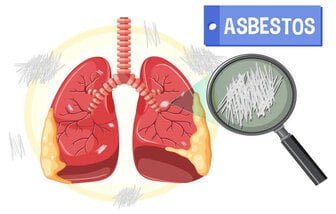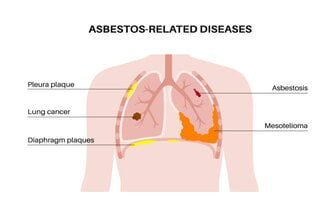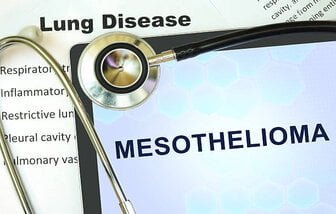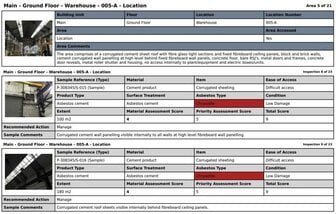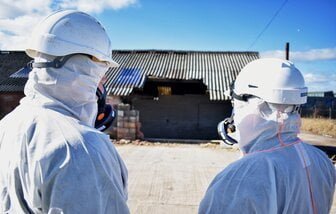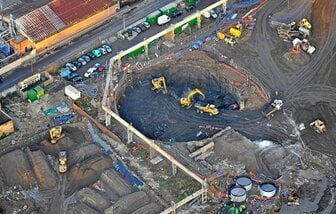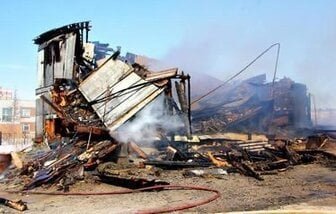Asbestos Inhalation
Asbestos is a hazardous mineral known for its durability and heat resistance, historically used in various industries. Inhalation of asbestos fibers can lead to severe health issues such as asbestosis, lung cancer, and mesothelioma. Understanding the risks and implementing preventive measures, including workplace safety protocols and personal protective equipment, is crucial. Early detection and treatment options can help manage symptoms and improve quality of life for affected individuals.
Understanding the Impact of Asbestos Inhalation on the Human Body
Asbestos is a naturally occurring mineral composed of thin, fibrous crystals. The term “asbestos” refers to a group of six distinct minerals: chrysotile, amosite, crocidolite, tremolite, anthophyllite, and actinolite.
These minerals are known for their durability, resistance to heat, and insulating properties, which made them highly desirable in various industrial applications.
Historically, asbestos was extensively used in construction materials, automotive parts, textiles, and shipbuilding. For instance, it was commonly found in insulation, roofing shingles, floor tiles, and brake pads.
However, its widespread use came with a significant downside: asbestos fibers can easily become airborne and inhaled, posing severe health risks.
The primary reason asbestos is considered hazardous lies in its fibrous nature. When asbestos-containing materials are disturbed, they release tiny fibers into the air.
These fibers are often invisible to the naked eye and can be easily inhaled. Once inhaled, asbestos fibers can become lodged in the lungs and other tissues, leading to serious health problems over time.
The body’s natural defenses are unable to break down or expel these fibers, causing chronic inflammation and scarring.

Long-term exposure to asbestos fibers is associated with several chronic and potentially fatal health conditions. One of the most common diseases linked to asbestos inhalation is asbestosis, a progressive pulmonary disease characterized by the scarring of lung tissue. Asbestosis develops gradually, often taking several years to manifest symptoms such as persistent cough, shortness of breath, and chest pain. The fibrotic changes in the lungs impede respiratory function, leading to a decrease in oxygen exchange and, in severe cases, respiratory failure.
Lung cancer is another significant concern for individuals exposed to asbestos over extended periods. Unlike asbestosis, lung cancer can develop with or without the presence of fibrotic lung tissue. The risk of lung cancer increases significantly with the duration and intensity of asbestos exposure, often compounded by other risk factors such as smoking. Symptoms typically include chronic cough, chest pain, weight loss, and hemoptysis (coughing up blood). Early detection is crucial for better prognosis, but the latency period between exposure and onset of lung cancer can be several decades, making timely diagnosis challenging.
Mesothelioma, a rare but aggressive cancer, is almost exclusively caused by asbestos exposure. This malignancy affects the mesothelial cells lining the chest cavity (pleura) or abdominal cavity (peritoneum). Mesothelioma has an exceptionally long latency period, often between 20 to 50 years, which means symptoms might not appear until many years after the initial exposure. Early-stage mesothelioma is often asymptomatic, but as the disease progresses, patients may experience severe chest pain, shortness of breath, and pleural effusion (fluid buildup around the lungs). Unfortunately, due to its aggressive nature and late diagnosis, mesothelioma has a high mortality rate, with many patients surviving less than a year post-diagnosis.
Statistical data underscores the severity of these conditions among those with significant asbestos exposure. For instance, studies have shown that individuals with prolonged exposure have a fivefold increased risk of developing lung cancer. Mesothelioma incidence rates are also markedly higher among this population, with approximately 3,000 new cases diagnosed annually in the United States alone. The latency period between exposure and disease onset complicates tracking and prevention efforts, highlighting the need for ongoing monitoring and early intervention strategies for at-risk populations.
Preventing asbestos exposure is paramount in mitigating the risks associated with inhalation. Workplace safety protocols are critical in industries where asbestos use is prevalent, such as construction, shipbuilding, and manufacturing. Employers must adhere to stringent regulations, including the implementation of comprehensive asbestos management plans and ensuring that all employees are trained in asbestos safety procedures. Key preventive measures include the use of wet methods to suppress dust, proper ventilation systems, and regular monitoring of air quality to detect asbestos fibers.
Personal protective equipment (PPE) plays a vital role in safeguarding workers. PPE such as respirators, disposable coveralls, gloves, and goggles should be provided and mandated in high-risk environments. The correct use and maintenance of PPE are essential to ensure its effectiveness in preventing asbestos fiber inhalation. Additionally, employers should encourage regular health check-ups and provide access to medical surveillance programs for their workforce.
Homeowners and residents should also be vigilant about asbestos exposure. Conducting professional home inspections, especially in older buildings, can identify the presence of asbestos-containing materials (ACMs). If ACMs are found, it is crucial to hire licensed asbestos abatement professionals to safely remove or encapsulate the materials. DIY removal is highly discouraged due to the significant health risks involved.
For individuals already affected by asbestos-related conditions, a range of treatment options is available. Symptomatic relief and supportive care are often the first lines of management, aiming to improve quality of life. This includes medications to alleviate pain, reduce inflammation, and manage respiratory symptoms. In more severe cases, aggressive treatments such as surgery, chemotherapy, and radiation therapy may be necessary. These interventions target the underlying disease, such as mesothelioma or lung cancer, and aim to extend survival rates.
Early detection and regular health screenings are crucial for individuals at risk of asbestos exposure. Routine medical examinations, including imaging tests and lung function assessments, can facilitate early diagnosis and timely intervention. Health professionals should remain vigilant and maintain a high index of suspicion for asbestos-related diseases in patients with a history of exposure.
Asbestosis Symptoms
Asbestosis is a chronic lung disease primarily caused by prolonged exposure to asbestos fibers. Asbestos, once widely used in construction and various industries due to its fire-resistant properties, poses significant health risks when its fibers are inhaled.
Asbestos-Related Diseases
Learn about asbestos, its industrial uses, and the serious health risks associated with exposure. Discover how to identify asbestos-containing materials, conduct surveys, and implement safety measures to prevent exposure.
Asbestos Lung Cancer
Once inhaled, asbestos fibers can lodge in the lung tissues, leading to inflammation and scarring over time. This can culminate in serious health issues, the most severe of which include asbestosis, mesothelioma, and asbestos lung cancer.
Asbestos Inhalation
Asbestos is a hazardous mineral known for its durability and heat resistance, historically used in various industries. Inhalation of asbestos fibers can lead to severe health issues such as asbestosis, lung cancer, and mesothelioma.
What is Mesothelioma
The most common sites for this malignancy are the pleura (lining of the lungs), peritoneum (lining of the abdomen), and pericardium (lining of the heart). Due to its aggressive nature, mesothelioma poses significant challenges in diagnosis and treatment
Asbestos Compensation
Learn about the dangers of asbestos exposure, the legal framework for seeking compensation, and the types of claims available for asbestos-related illnesses like mesothelioma and asbestosis. Discover how to navigate the claims process
Asbestos & Your Health
Learn about asbestos, a fibrous mineral widely used in construction until it was banned in the UK in 1999 due to significant health risks. Discover the serious conditions such as asbestosis, lung cancer, and mesothelioma caused by asbestos exposure.
Asbestos in Homes
Learn about the risks of asbestos, a hazardous material commonly found in homes. This guide covers the health dangers of asbestos exposure, including asbestosis, lung cancer, and mesothelioma, and provides essential information on proper handling, safety precautions, and professional asbestos removal to safeguard your health and home
What is a Asbestos Surveys
Learn about the different types of asbestos surveys conducted in the UK, including asbestos management surveys, asbestos refurbishment and demolition surveys, and asbestos reinspection surveys. Find out why these surveys are crucial for identifying and managing the presence of asbestos in buildings, and how they ensure the safety.
What is a Pre-Demolition Survey?
A pre-demolition survey is an essential step in any demolition project. By conducting a thorough assessment of the building or structure, potential hazards can be identified and appropriate measures can be taken to ensure a safe and efficient demolition
Refurbishment Survey
A refurbishment survey is a critical step in the refurbishment process in the UK. It helps to identify and manage the risks associated with asbestos-containing materials, ensuring the safety of workers and occupants. By engaging a qualified surveyor to conduct the survey, duty holders
Asbestos Removal
Total Asbestos is a leading asbestos removal company in the UK, offering comprehensive services including surveys, testing, and removal. With a focus on safety, regulatory compliance, and cutting-edge technology, they manage projects across residential, commercial, industrial, and public sectors.
Types of Asbestos
Asbestos has been included in many materials in the last 150 years. Three common types of asbestos can be found in buildings: Crocidolite (Blue Asbestos), Amosite (Brown Asbestos), Chrysotile (White Asbestos)
Managing Asbestos
The strategy of the HSE is to ensure that those involved in the repair, removal or disturbance of asbestos containing materials (ACMs), such as insulation coatings or insulation boards, are licensed & competent
What is Asbestos and why its so dangerous ?
Asbestos was commonly used as a construction material in the UK between the 1950s and 1980s in particular. If your home was built between these years, chances are that you are living with Asbestos
Control Of Asbestos Regulations 2012
The control of asbestos regulation 2012 came into force on 6 April 2012. In practice the changes are fairly limited. They mean that some types of non-licensed work with asbestos now have additional requirements, i.e. notification of work, medical surveillance and record keeping.
Asbestos In The Workplace
Learn about asbestos, its types, and the health risks associated with exposure. Understand the importance of managing asbestos in the workplace, the UK’s Control of Asbestos Regulations 2012, and the role of the Health and Safety Executive (HSE) in enforcing these regulations. Discover the safety measures necessary to protect workers
Brownfield Land Remediation Contractors
We have tackled some of the most complex remediation projects undertaken in the United Kingdom, surpassing industry standards. Our diverse range of experience and expertise sets us apart and we continually deliver to the highest standards
Total Asbestos Consultancy
Total Asbestos stands as a premier provider of comprehensive asbestos consultancy services across the UK. Renowned for their expertise and unwavering commitment to safety, Total Asbestos offers a wide array of services designed to address the multifaceted challenges posed by asbestos.
Let's Work Together
Please complete the form below and someone from the Total team will be in touch to discuss your asbestos requirements For urgent needs, our customer support team is available through various channels. You can reach us via phone during business hours, or through our dedicated email support. We are committed to providing timely assistance and ensuring your asbestos concerns are addressed promptly and professionally.

